May 16, 2019
Propagate Succulents, Mayfield Park, Pond Tour
I never had luck with native coneflowers until an unhappy, too-shaded plant seeded itself in a suddenly sunny bed. Hot, afternoon sun. Got it.
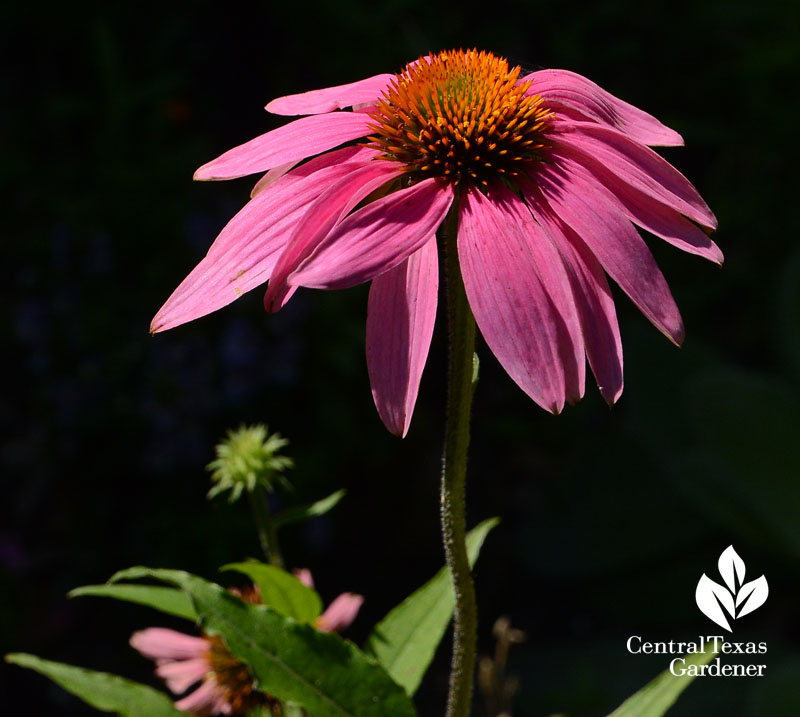
Since then, I’ve got an unruly grove, for which I am pleased. On Sunday, the wildlife parade included a Gulf Fritillary.
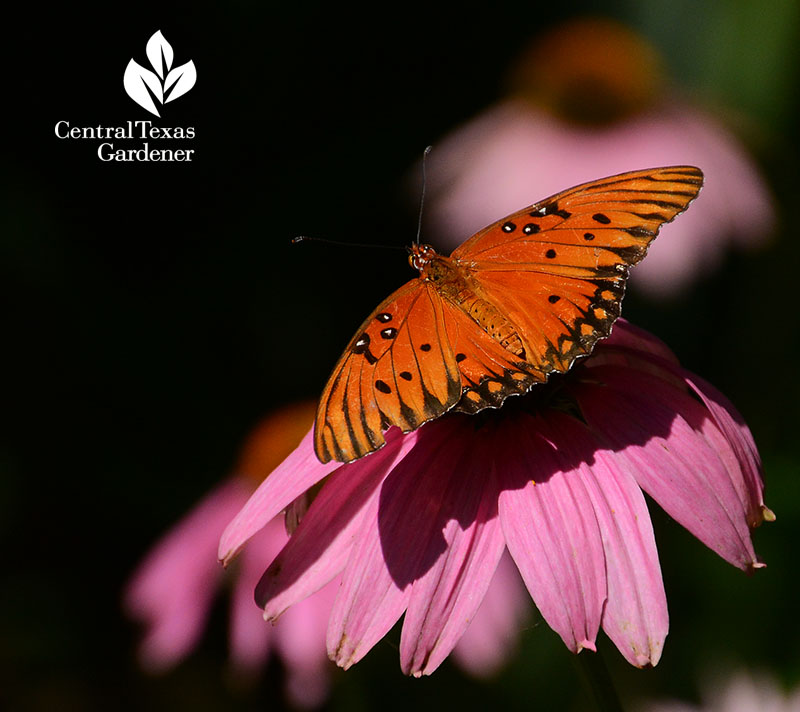
Exciting news! After sending up a 64” flower spike last August, my Mangave ‘Bloodspot’ formed bulbils this winter. I’d gotten it from Tillery Street Plant Company four years earlier.
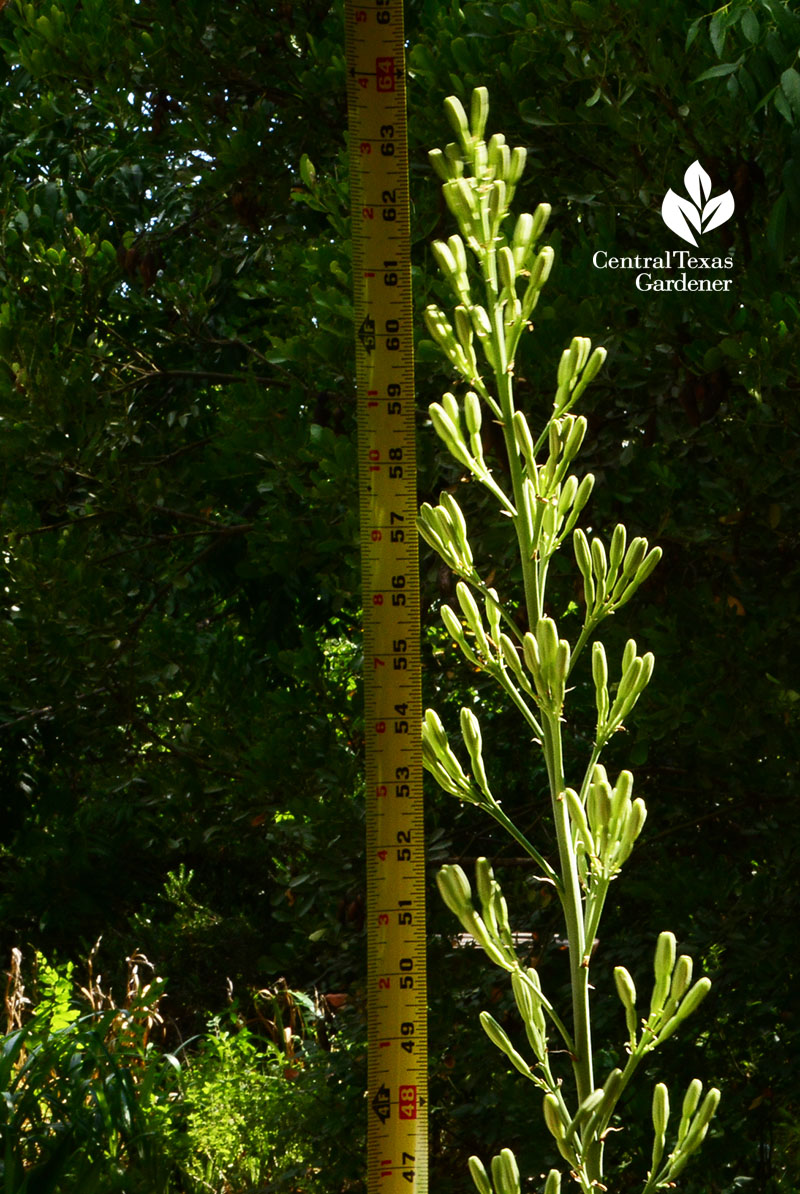
In April, I cut them off and let them dry out for two days.
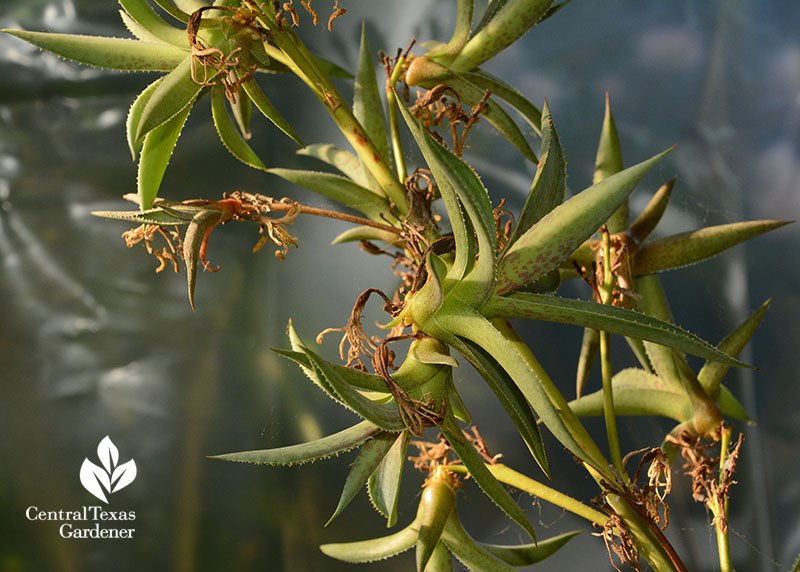
I also cut the stalk from the mom plant. Since she’s expended so much energy, I plan to repot in nourishing new soil. Until then, I simply topped her off with a bit of soil and dosed with Medina Hasta Gro. Already she’s sporting new leaves.
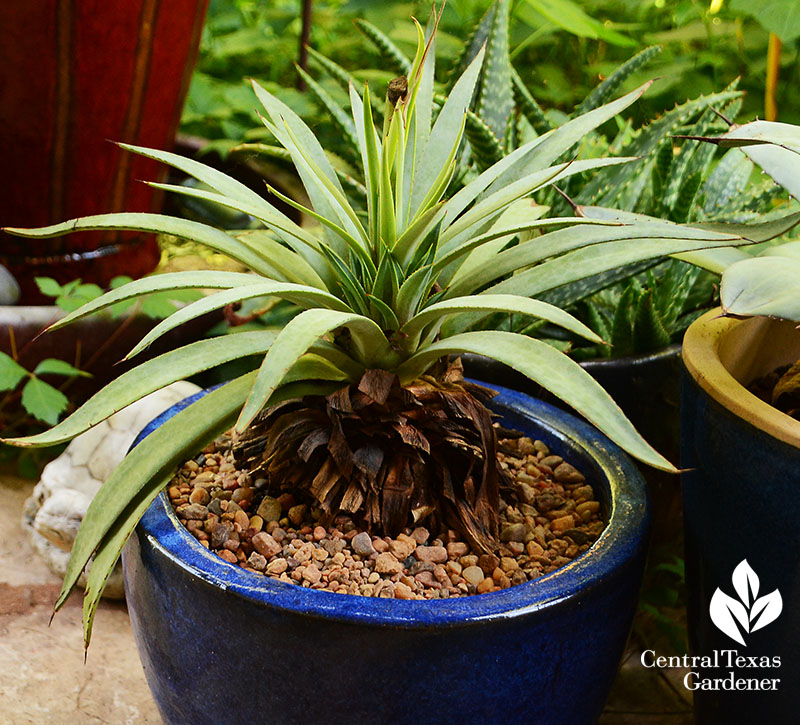
I potted the bulbils into East Austin Succulent’s cactus and succulent gritty, loose-draining soil that I moistened in a trug. (Next week, Jeff Pavlat shows how to make your own mix.) I watered them lightly and placed in part shade on the patio—bringing them into sun just for their pictures.
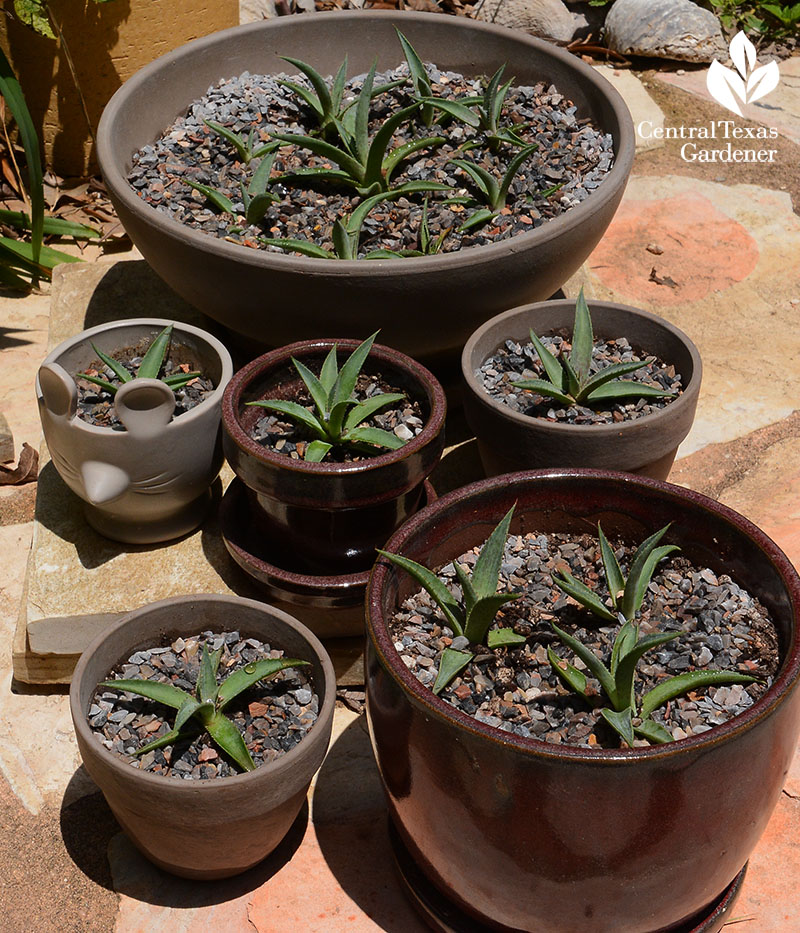
I didn’t water again for a week. Bingo, they all rooted! The mouse container one is smaller since I clipped it off in March. Waiting until April helped put some size on the others.
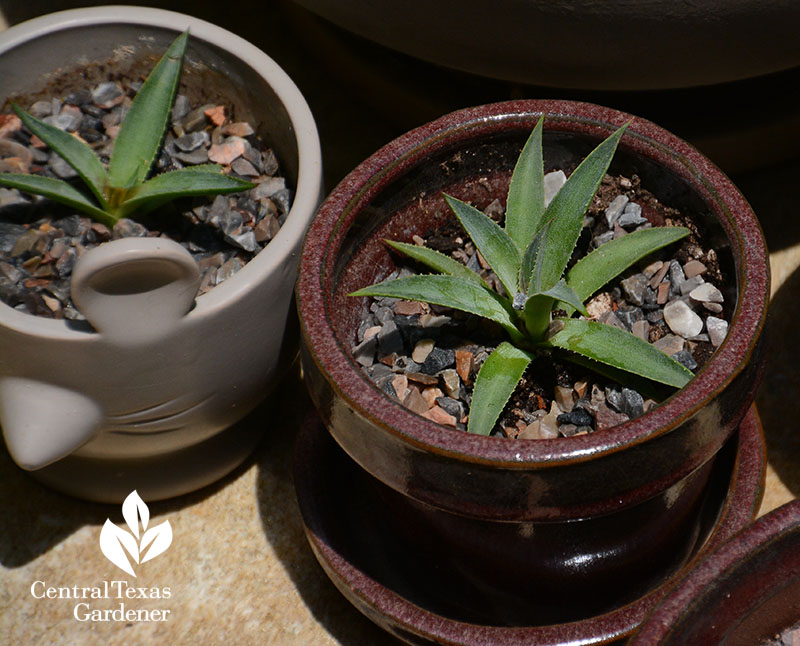
This week, Jeff Pavlat from the Austin Succulent & Cactus Society demonstrates how to propagate agaves from offsets (pups), bulbils (unpollinated seeds), and seeds. He’s also the Interim Executive Director of the Zilker Botanical Garden Conservancy, so one busy guy! Watch now.
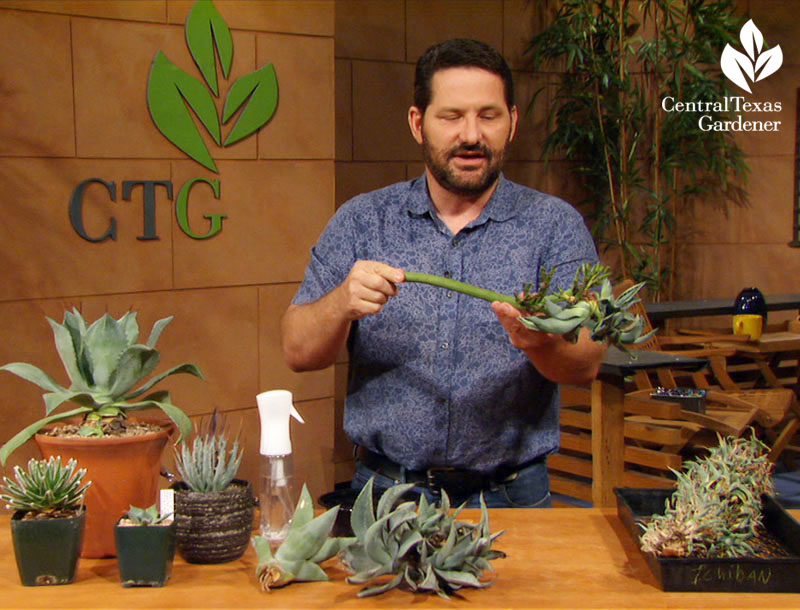
Several viewers sent in photos of intriguing growths on their young trees. Debra Shaw found tiny green balls on the leaves of her two-year-old Texas persimmon.
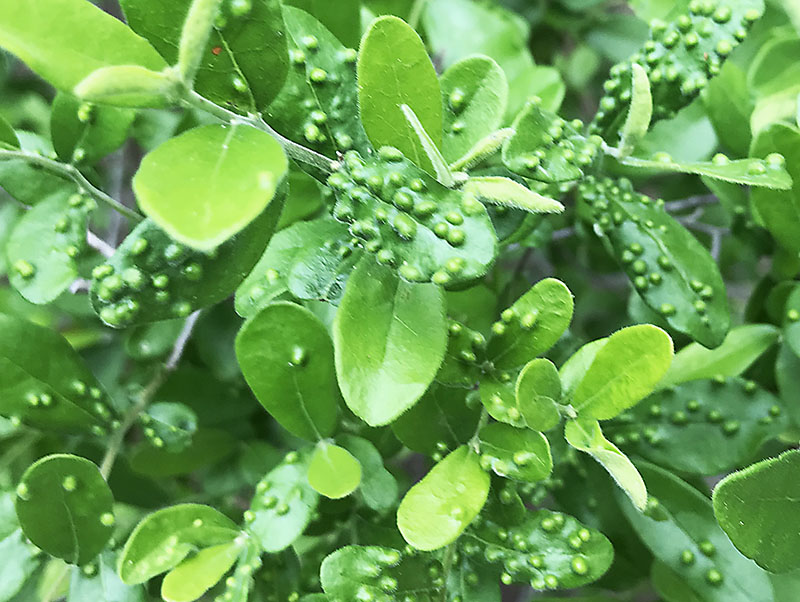
Eric Segerstrom discovered fuzzy ones on his young cedar elm.
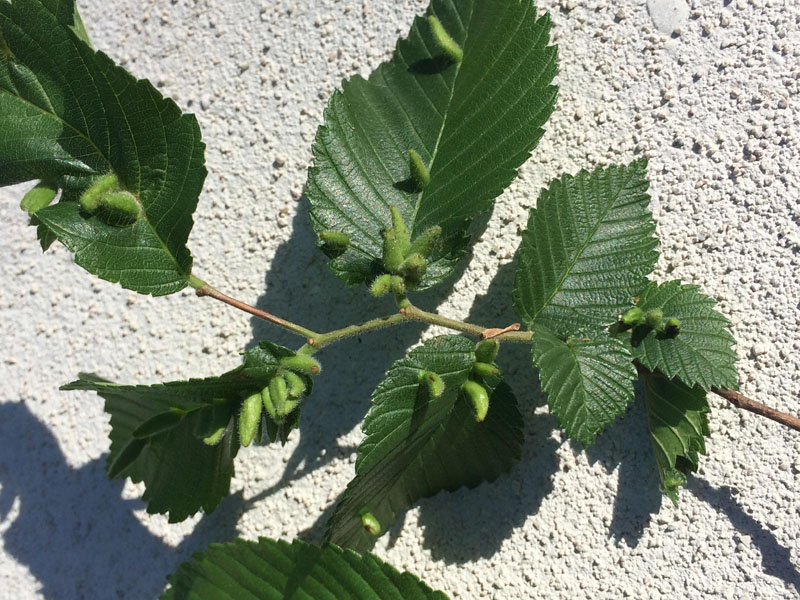
And in Northwest San Antonio, Jessica Keltz spotted little round balls on her two-year-old pecan tree. Daphne explains that they’re all leaf galls and generally cause no harm to the tree. Get her complete answer.
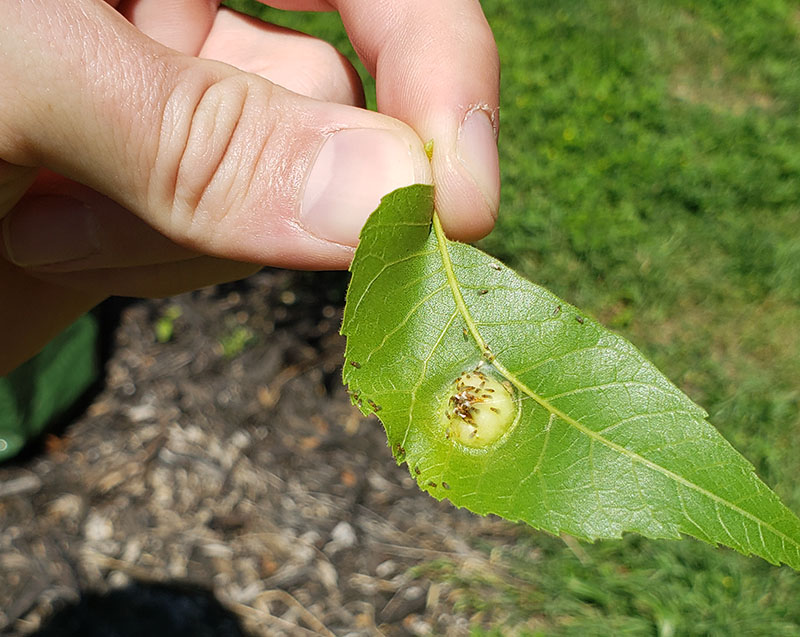
Since the 1990s, the energetic Austin Pond Society at Zilker Botanical Garden has helped gardeners dip into water gardening with advice, hands-on assistance, plants, and fish. Watch our 2018 video of Jeannie Ferrier and Steven Monfrini’s garden.
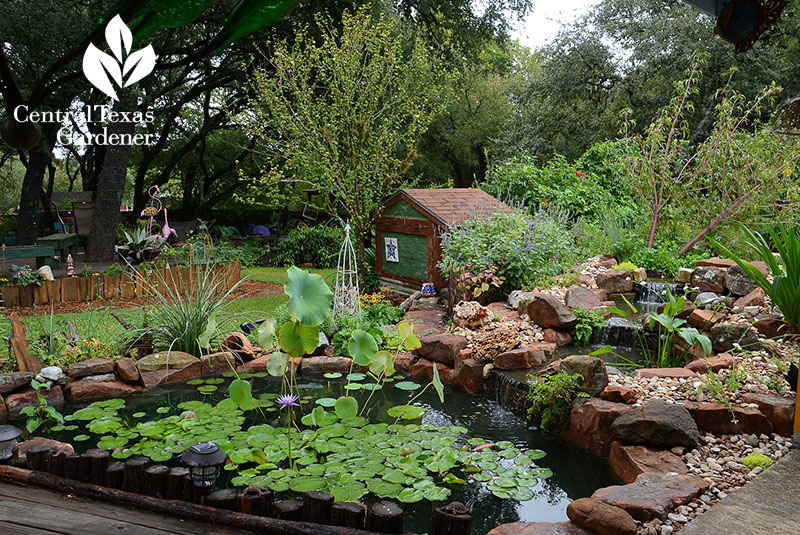
When APS started their annual tour in 1994, most people had never dreamed that they could have ponds, streams, and fountains in their own yards. But they sure wanted them, and now, they’re digging in to create outdoor living and wildlife habitat.
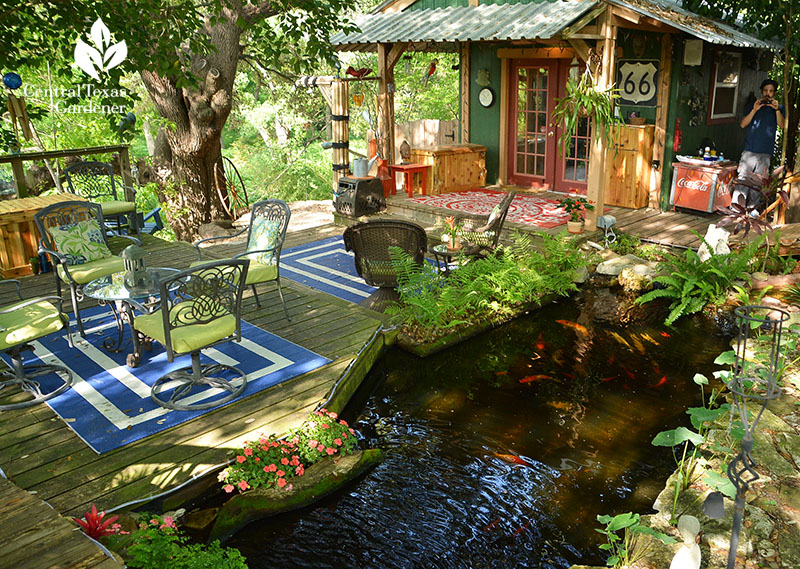
This week, Jeannie Ferrier from the Austin Pond Society (also on the board of the Zilker Botanical Garden Conservancy) previews just a handful of the many gardens on the 25th annual tour, June 1 & June 2. On Saturday, June 1, join them also for the romantic night gardens.
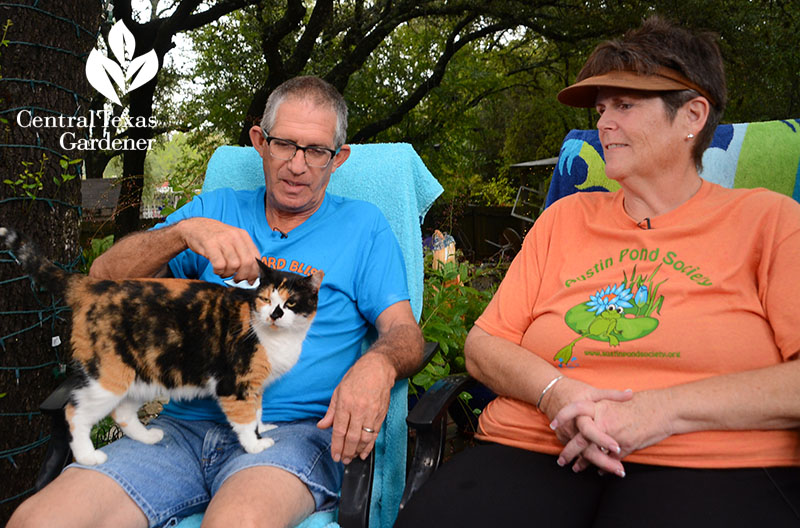
From big to small, professionally designed and homegrown, meet the gregarious gardeners to get answers to your questions along with design ideas.
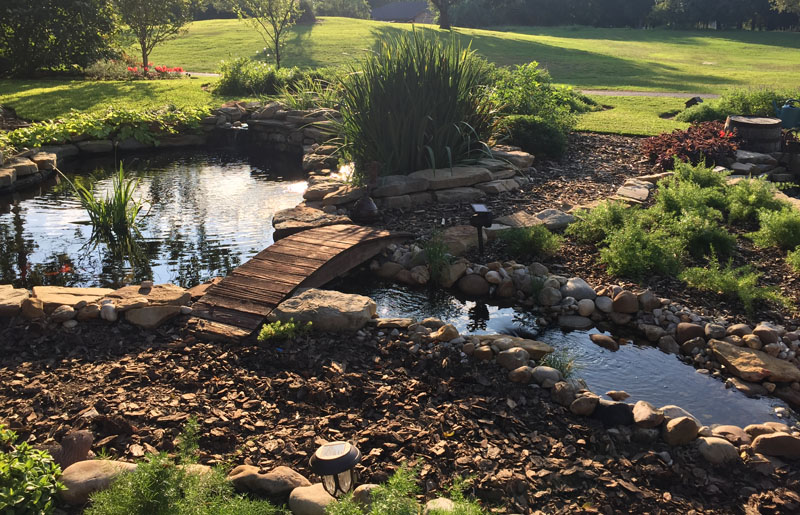
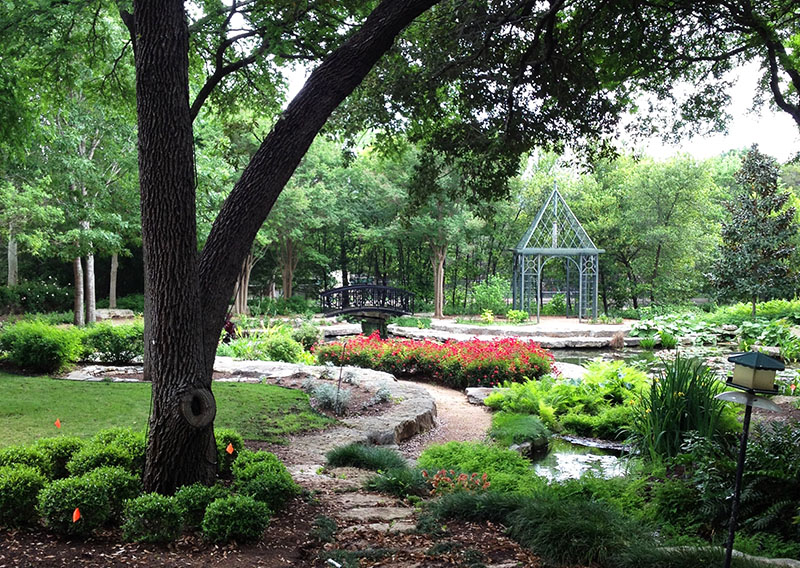
Get details and buy tickets online (for a discount!) or on tour day to support the Austin Pond Society’s education mission.
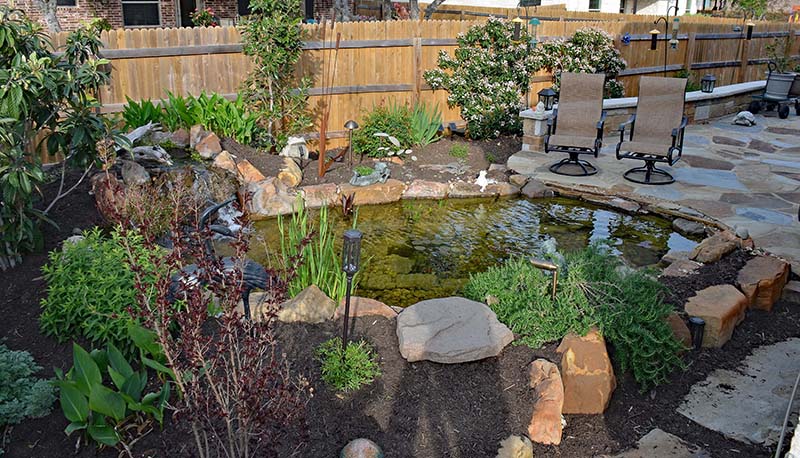
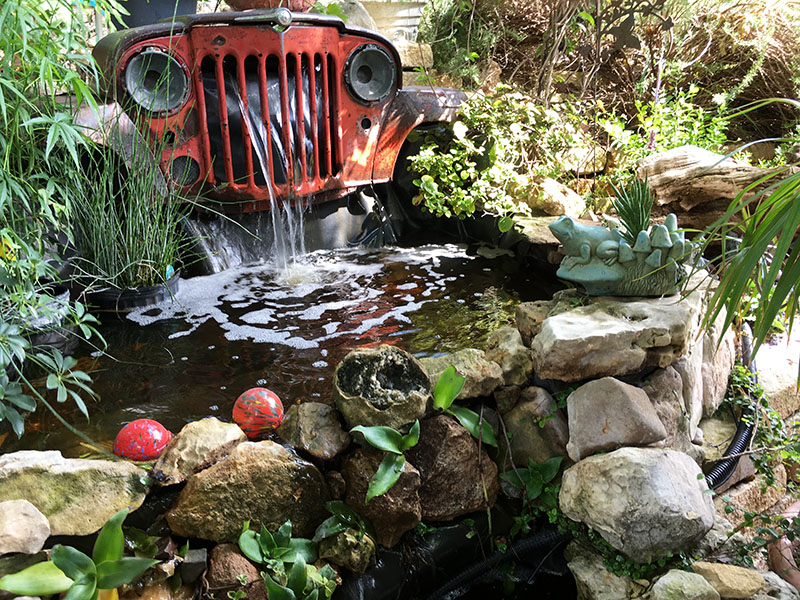
Watch now!
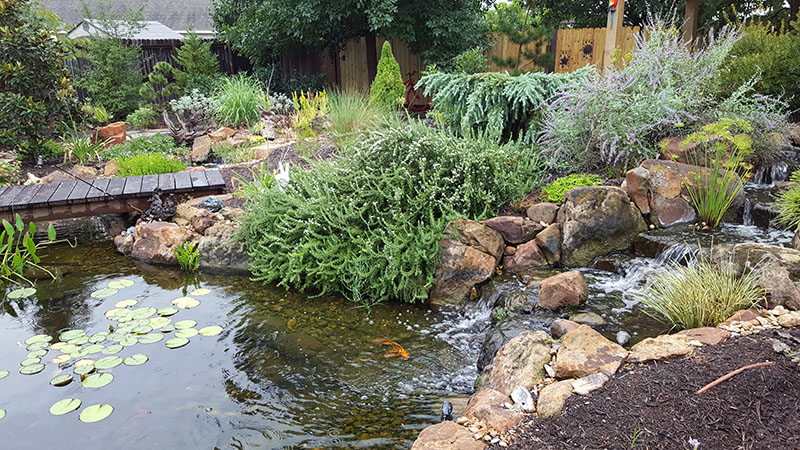
On tour at Mayfield Park, can you imagine that one day your house and garden would grow into a beloved park for generations of families—and peacocks—to enjoy?
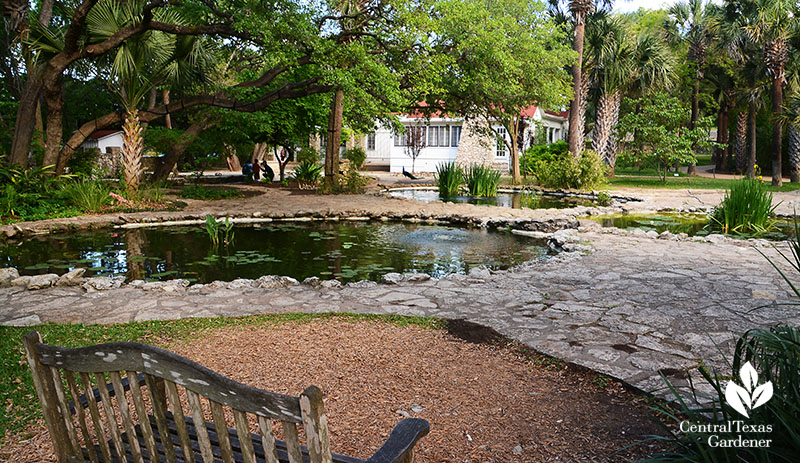
Every time I visit, peacocks perform for gleeful children and equally excited adults.
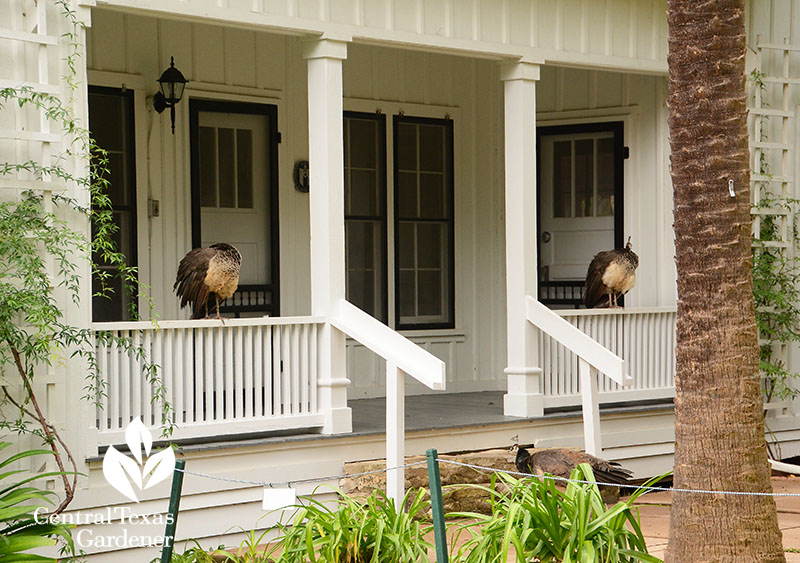
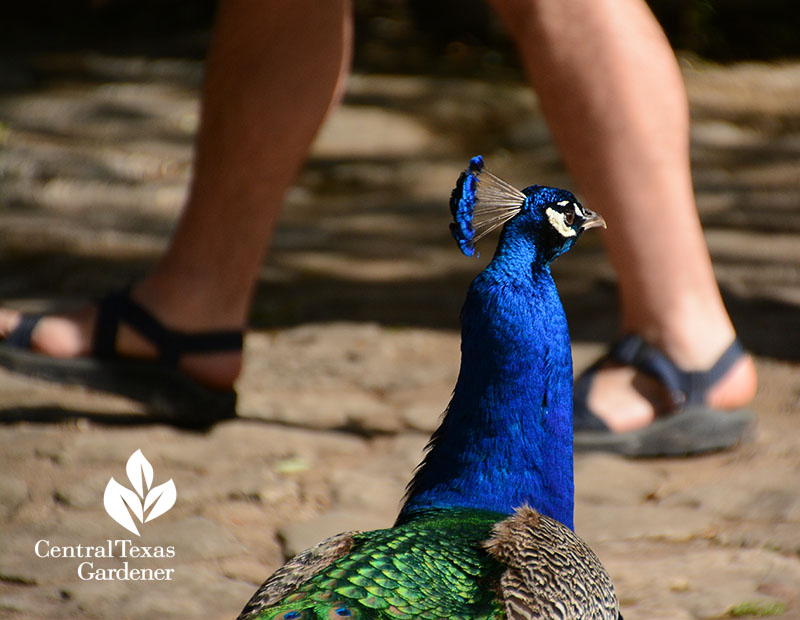
Over and over I hear, “What a beautiful place!” And indeed, it’s a soothing place of respite where nature, gardens, and architecture unite.
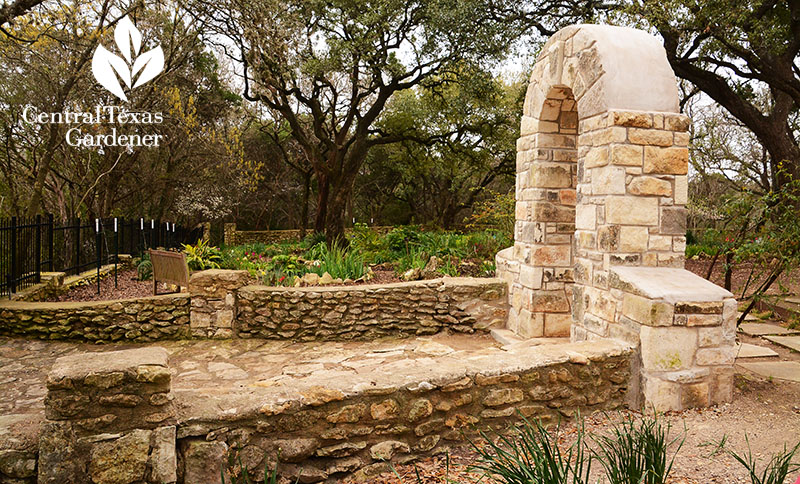
Mayfield Park’s story begins with a cottage built in the late 1800s on the grounds of the Edgemont plantation.
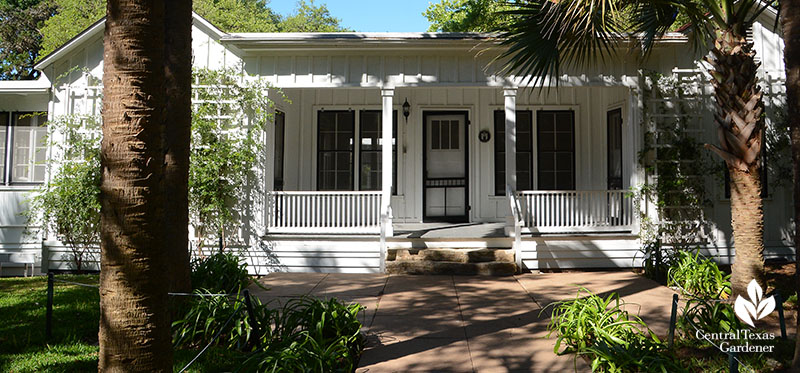
In 1909, Lulu and Allison Mayfield (Texas Secretary of State and Chairman of the Railroad Commission) bought the house and 23 acres “out in the country” as a weekend retreat.
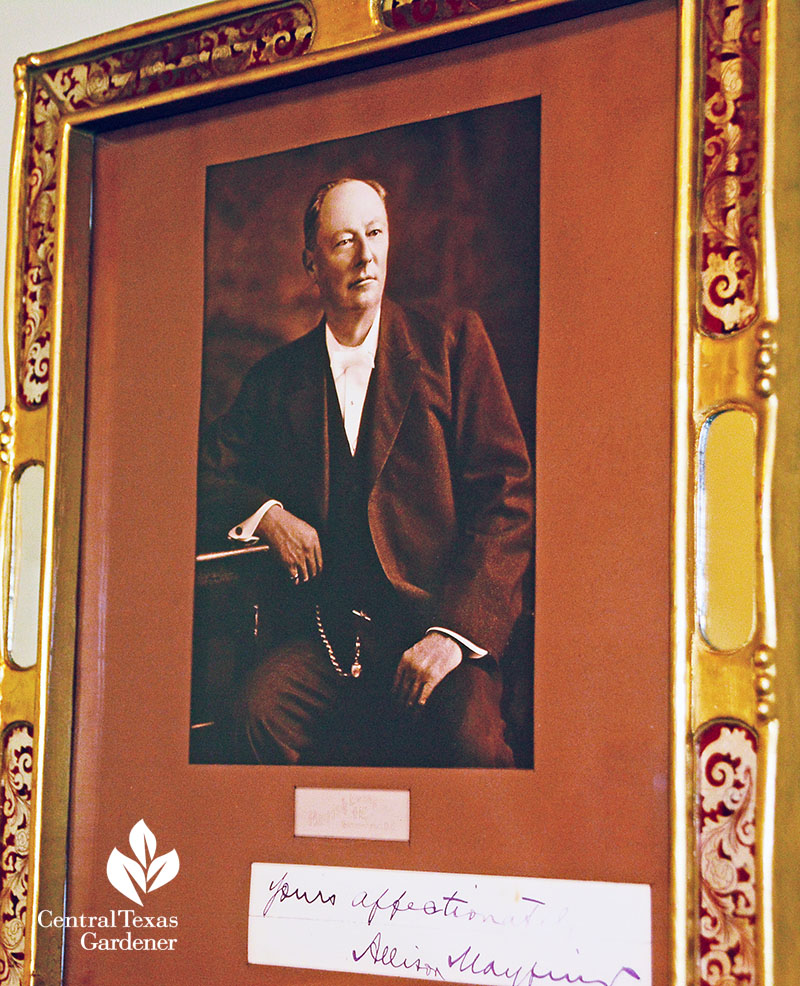
The attraction was the Colorado River, now Lake Austin and the grounds of The Contemporary Austin at Laguna Gloria, where Clara Driscoll built her house in 1916.
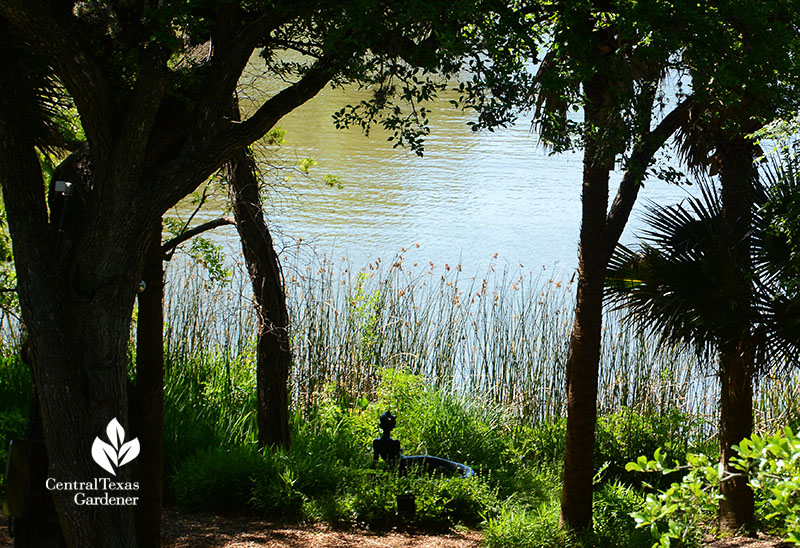
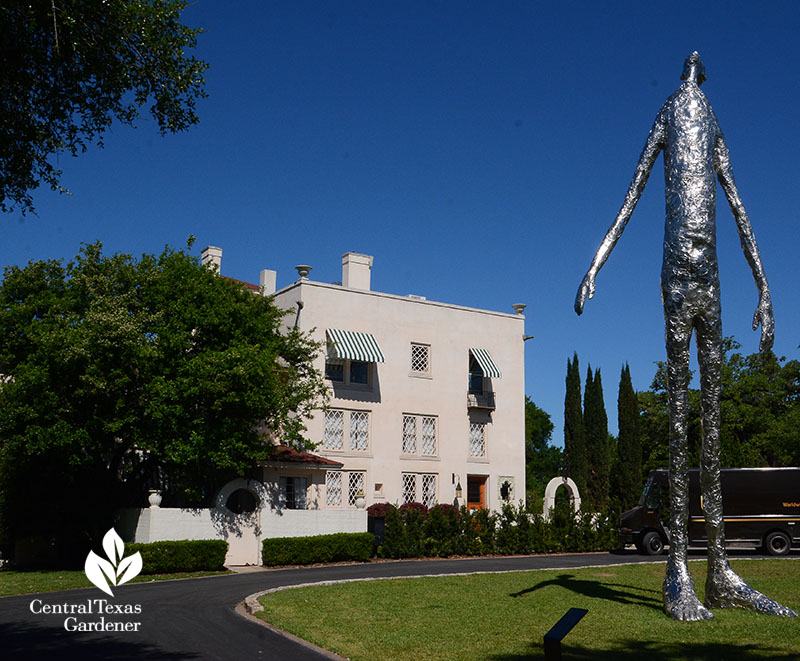
These days paved roads run through this Central Austin neighborhood just west of Mopac expressway.
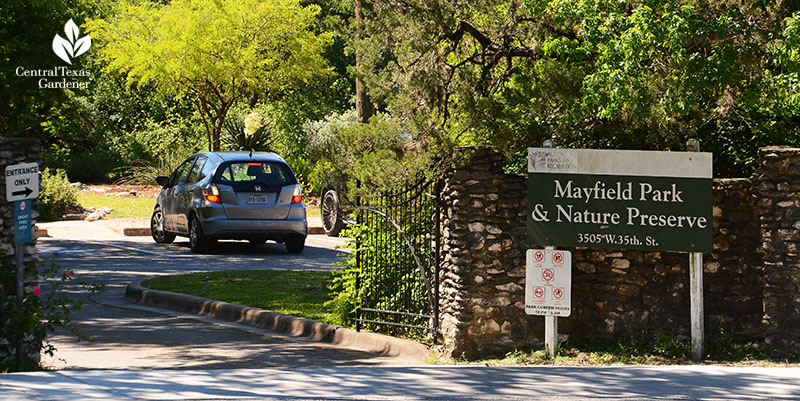
The Mayfield’s daughter, Mary Frances, married University of Texas professor Milton R. Gutsch in 1918.
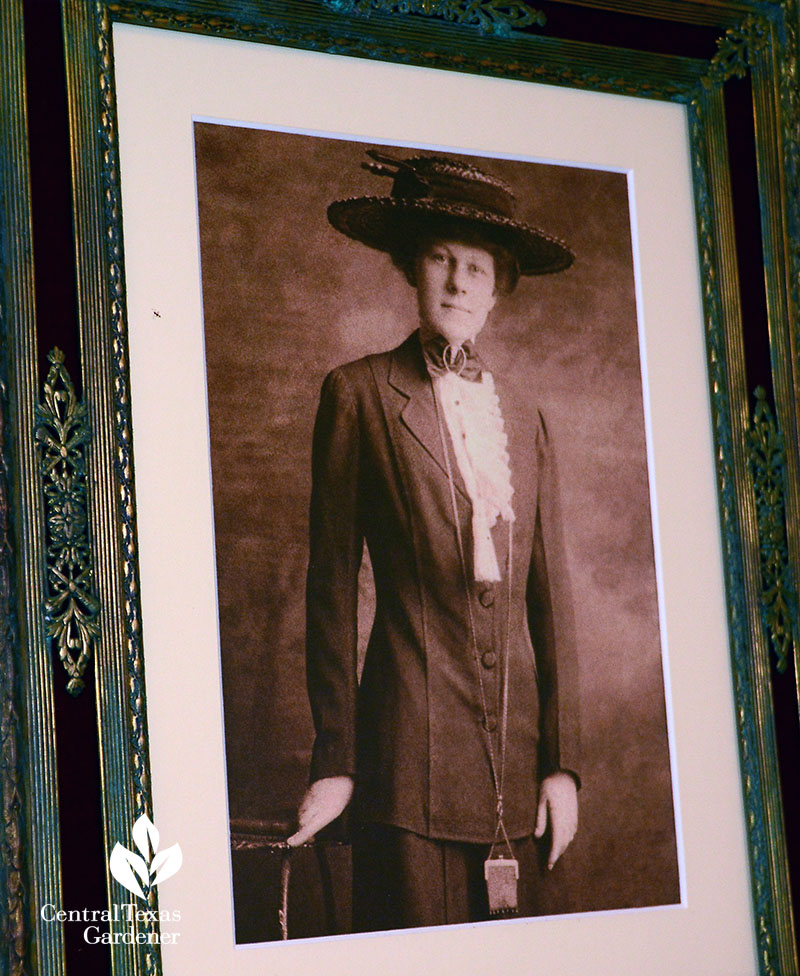
When she inherited the property upon Allison’s death in 1923, the young couple added on to the small house, including an enclosed sun room that runs its length.
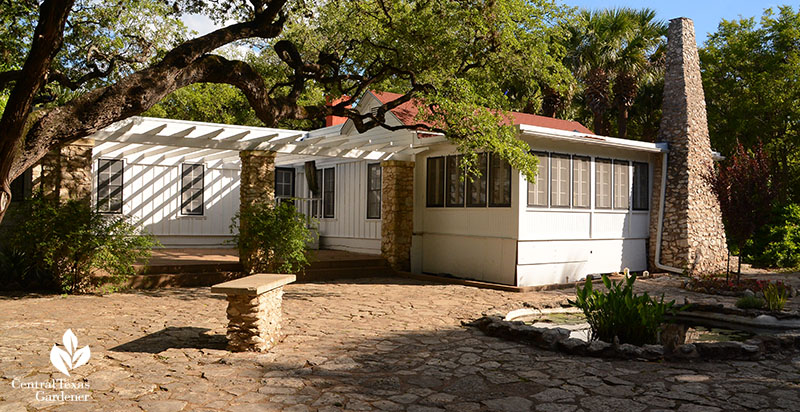
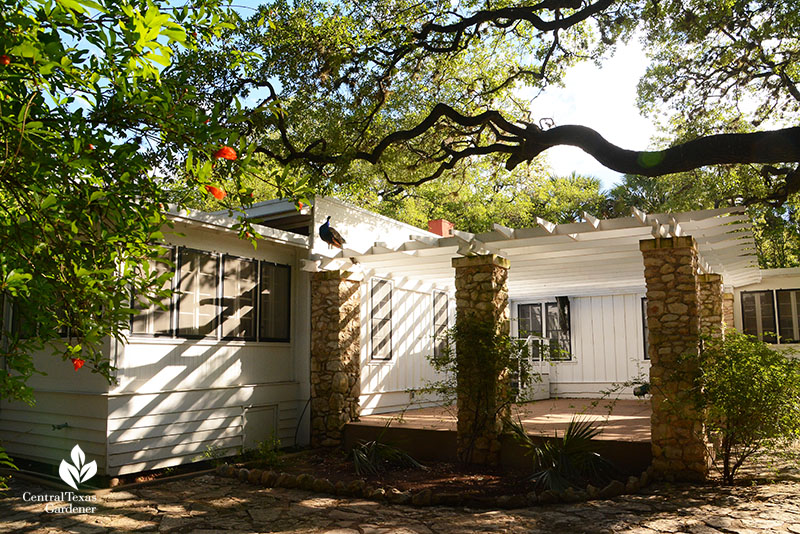
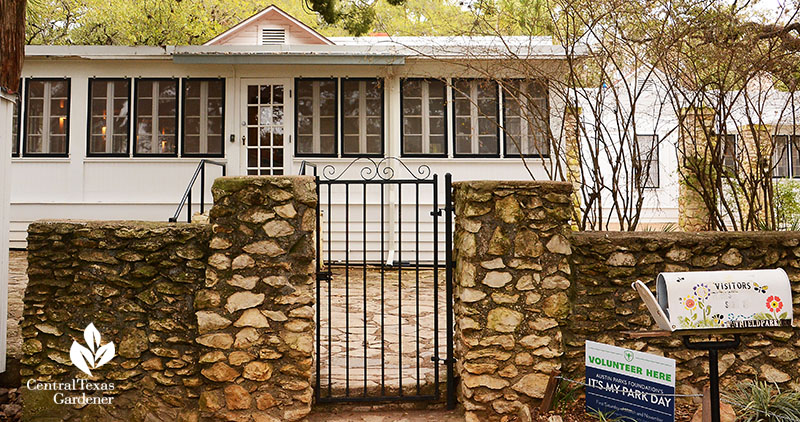
To house fancy pigeons, they built a dovecote for Moorhead pigeons.
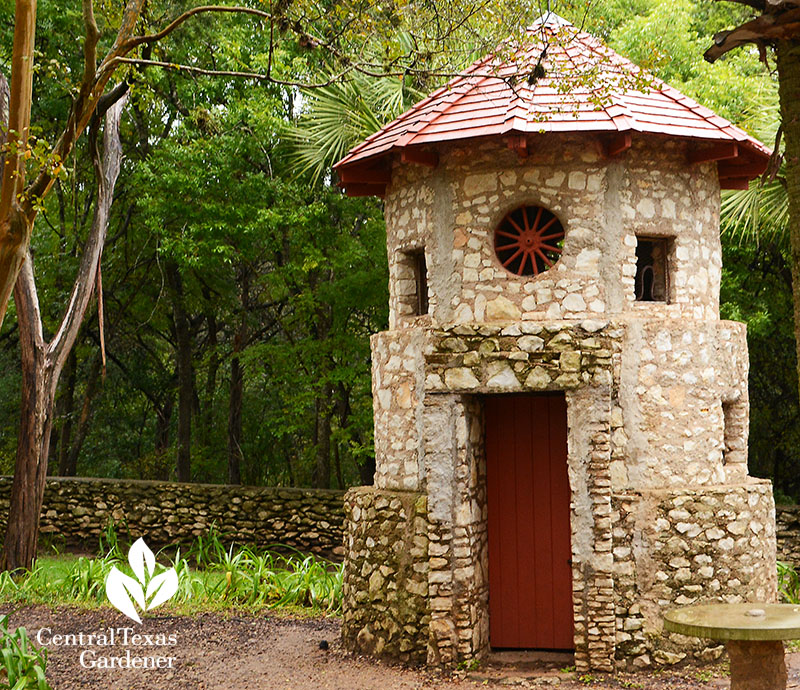
Someone gave them a pair of peafowl in the mid-30s. Their descendants still rule as self-appointed park ambassadors.
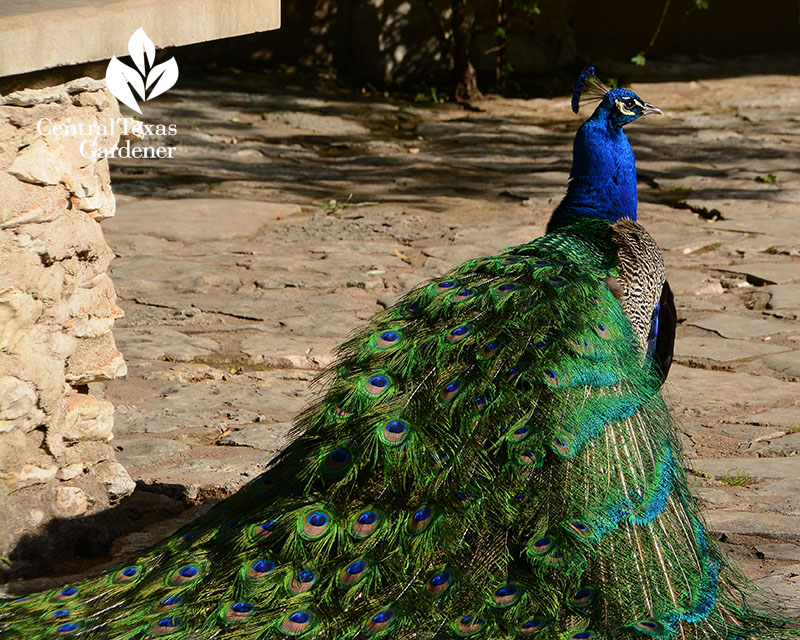
Working with Steve Arredondo, Mary and Milton embellished the grounds with stone walls and bell arch that leads now to the Mayfield Preserve.
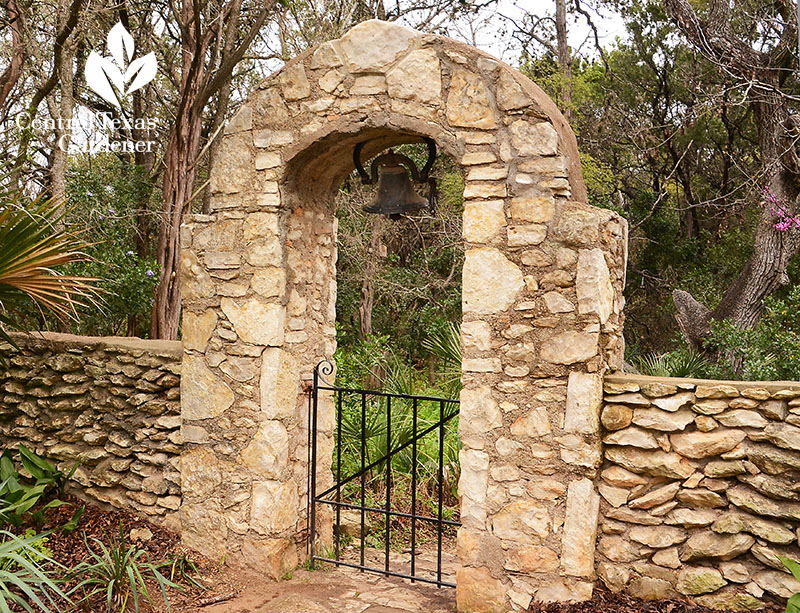
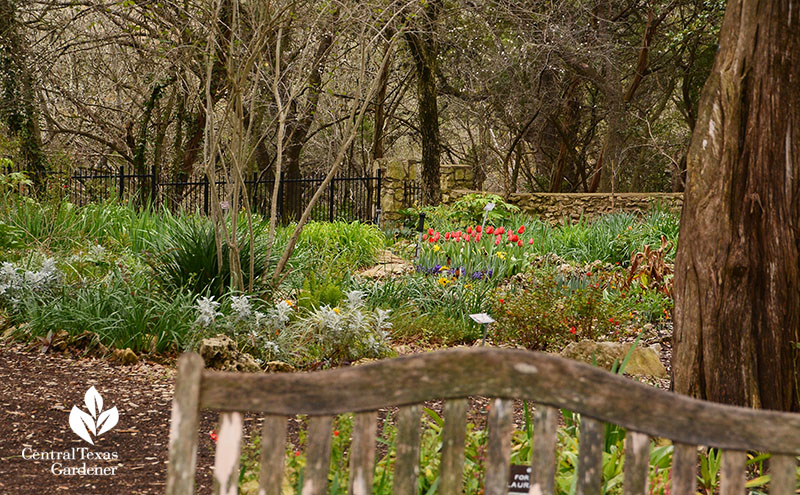
They laid stone patios and built five ponds that form a four-petalled flower with a round center.
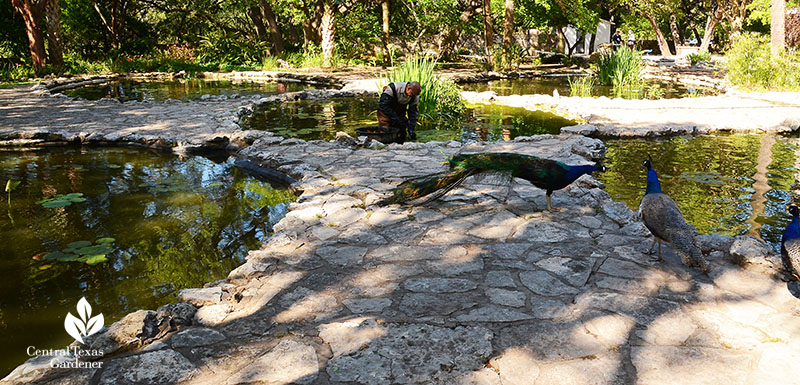
A stone waterfall burbles into an hourglass pond.
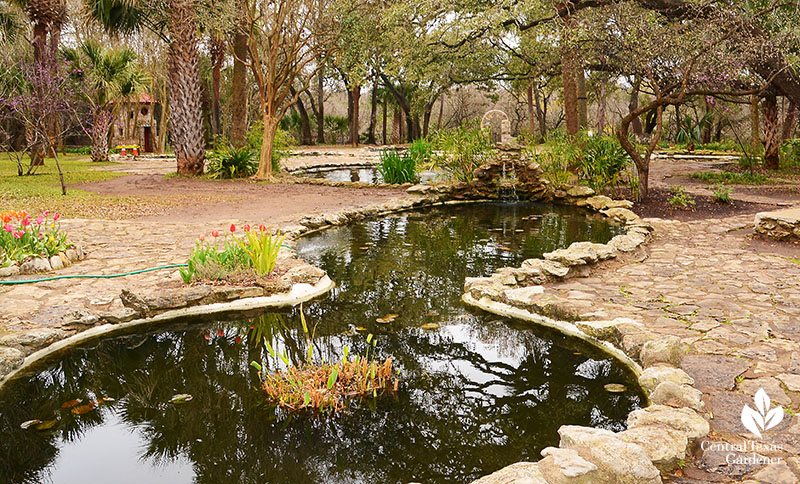
Mary, a founder of the Austin Junior League and the Violet Crown Garden Club, planted the gardens. She collected native plants from the wild and embellished with bulbs and flowering perennials for every season.
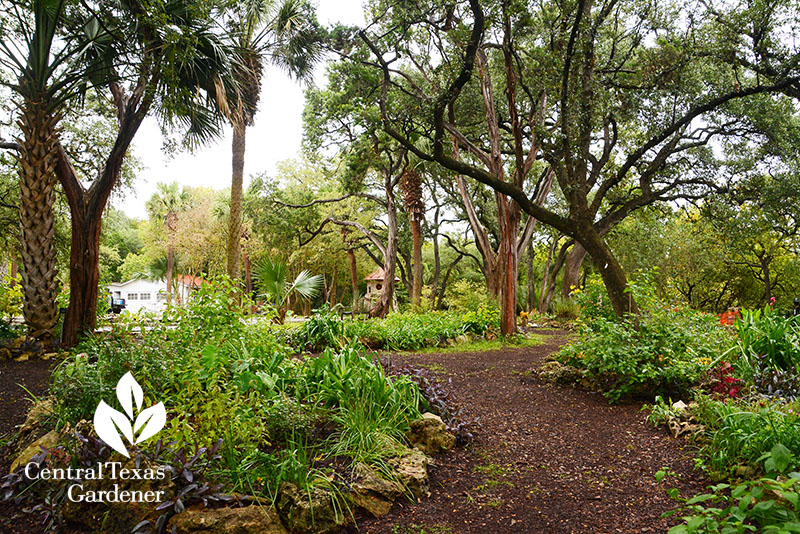
The Gutsch’s allee of Texas Sabal palms wasn’t as stately back then, but their vision certainly grew.
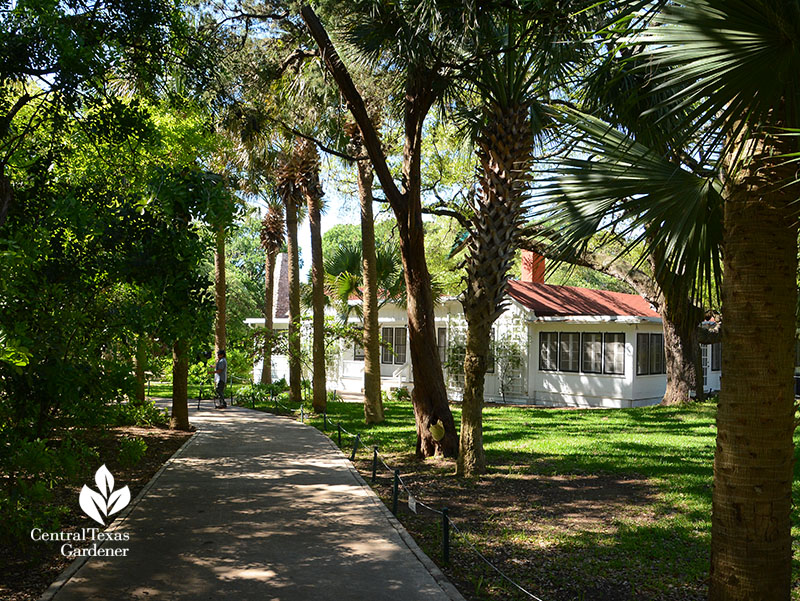
Milton died in 1967, and when Mary died in 1971, she willed the property to the City of Austin’s Parks and Recreation Department to be used as a park.
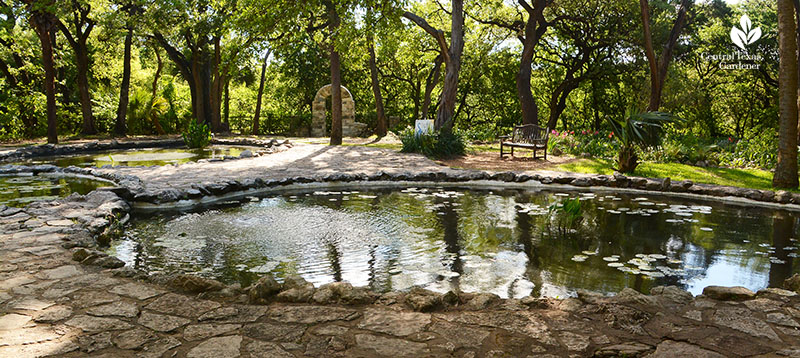
But it took a helping hand from the community. In 1986, Karen Cannatti, Mary C. Kaiser, and Barbara Watt dug in as the Mayfield Park Community Project, a special project of Friends of the Parks. This is Karen.
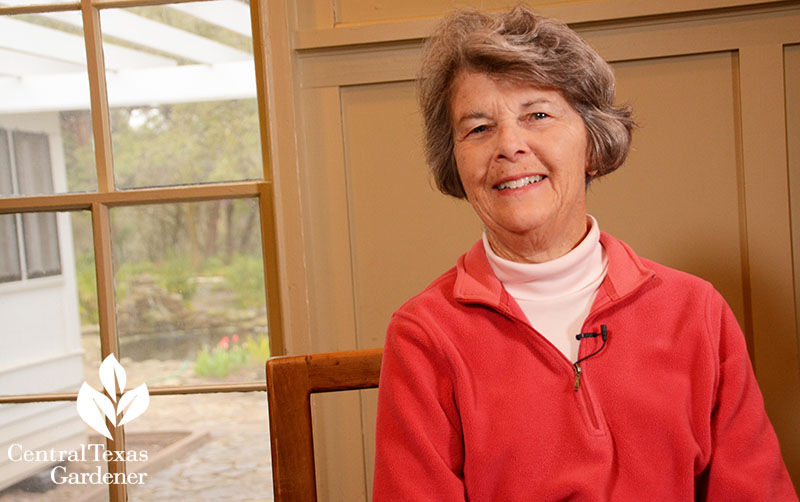
They consulted historians as they raised money to renovate the house and preserve its history.
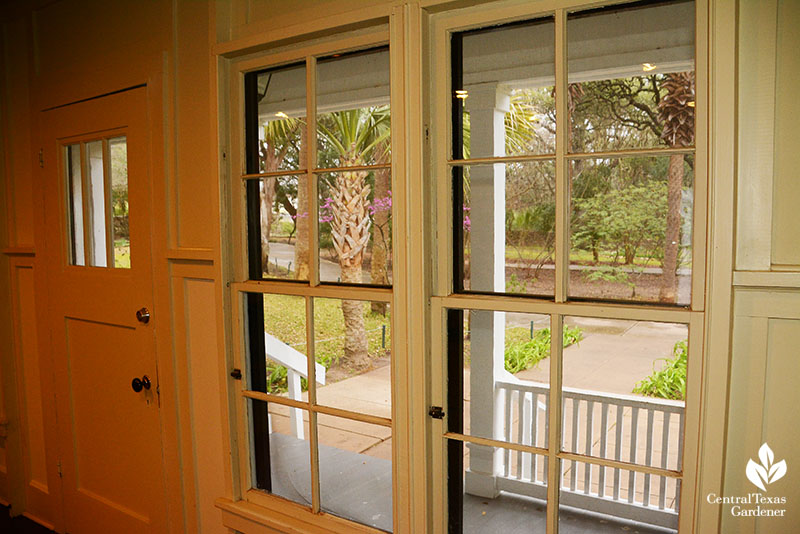
A popular outdoor wedding and event venue, the restored house now charms indoor bridal parties and community gatherings in all weather.
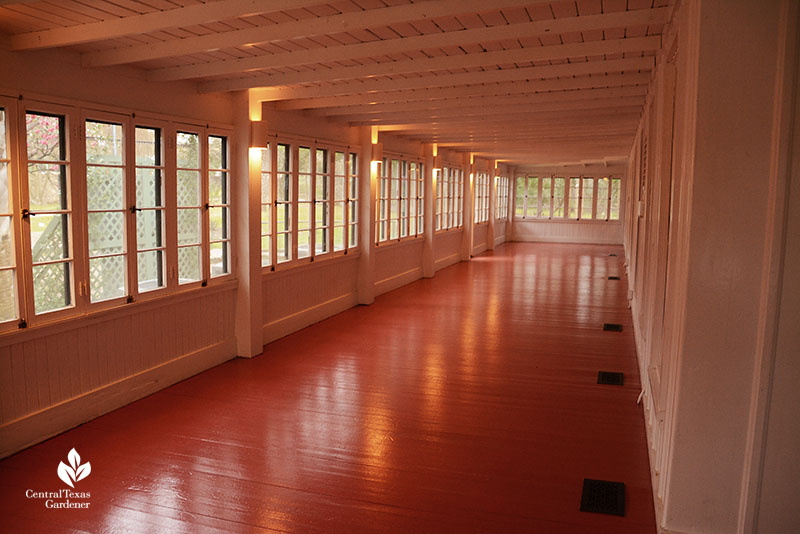
Over the years, they’ve financed renovations through grants, fundraisers, community supporters, and the City of Austin. The latest project replaced a crumbling part of wall and arch that’s a favorite for weddings.
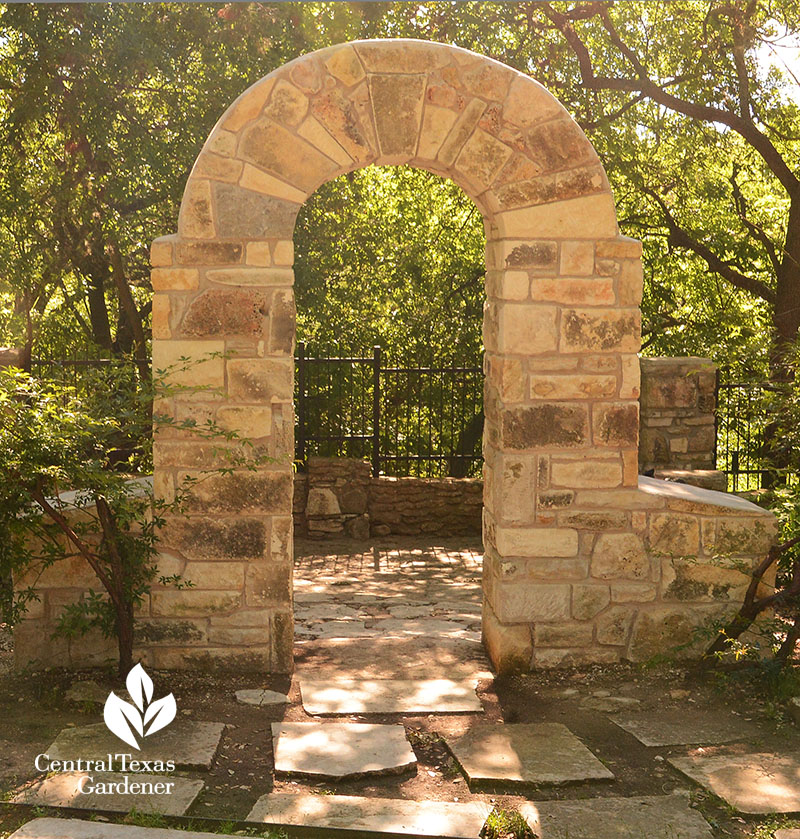
To help restore and maintain the gardens, Mayfield put out the call for volunteers. Quickly, individuals, families and community groups jumped in to adopt one of the over 30 plots.
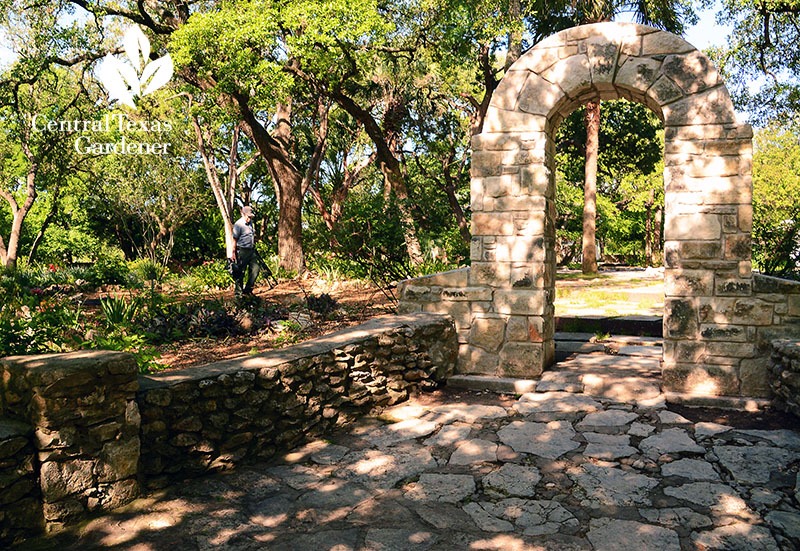
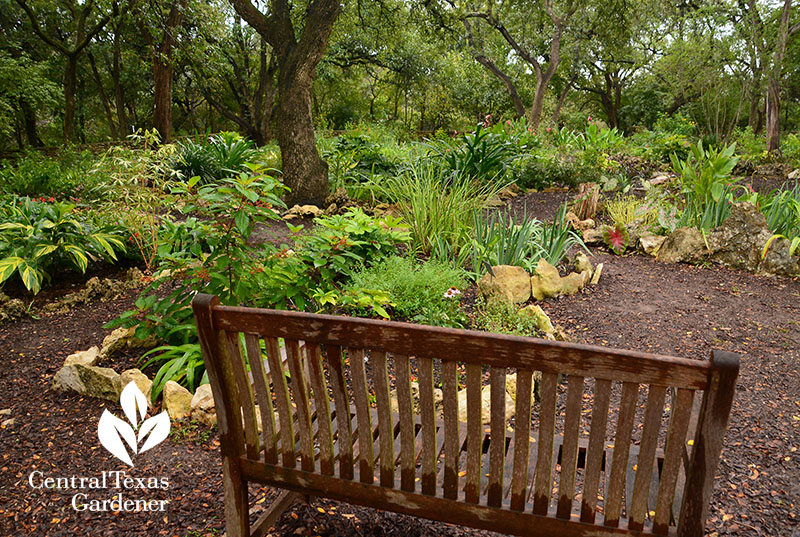
The ponds needed attention, too. The Austin Pond Society dived right in to help clean, maintain, care for the fish, and refurbish the water plants.
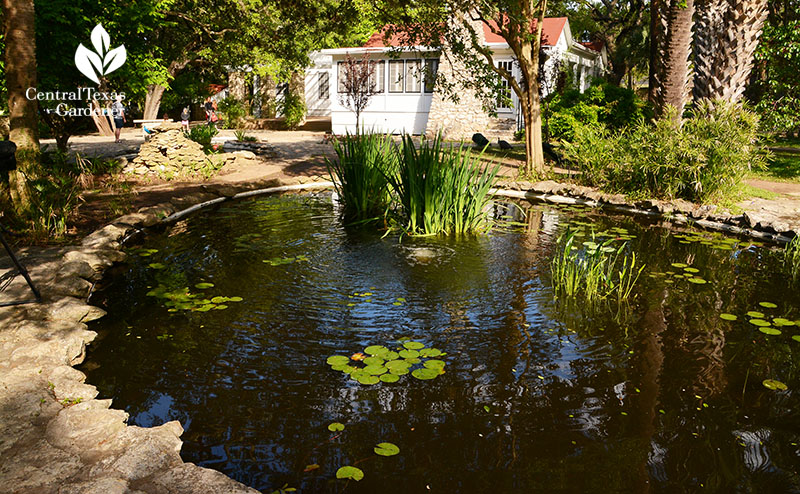
Ruben Angeles from Austin Parks and Recreation jumped in with the Pond Society’s Steven Monfrini after October 2018’s flooding rains clogged up the works and fire ants blew out the electrical connections.
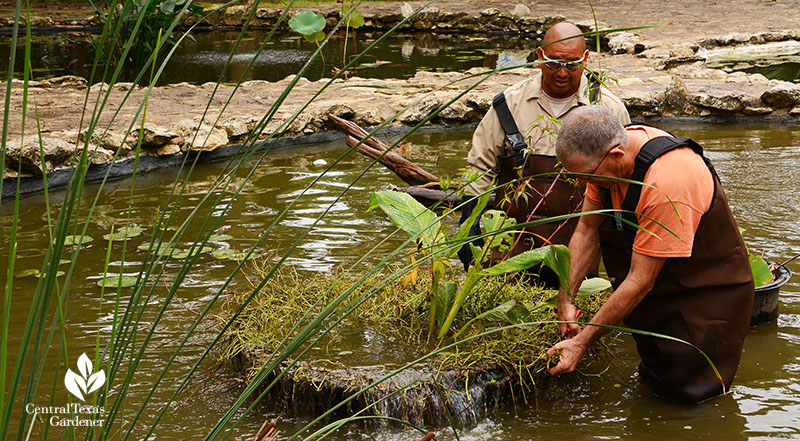
Along with plant maintenance, including dividing when needed, Pond Society members donate new plants for seasonal diversity. And Ruben’s there all the time keeping things up!
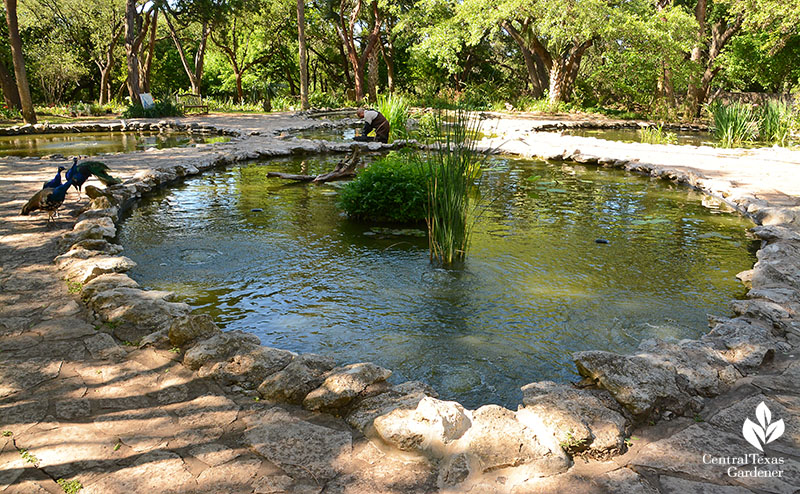
APS member Jeannie Ferrier and Ruben scavenged a piece of wood to harbor turtles (including babies). Honestly, I think the turtles come out not to bask in sun, but to revel in squeals of kid delight and selfies galore from phone and camera-toting adults.
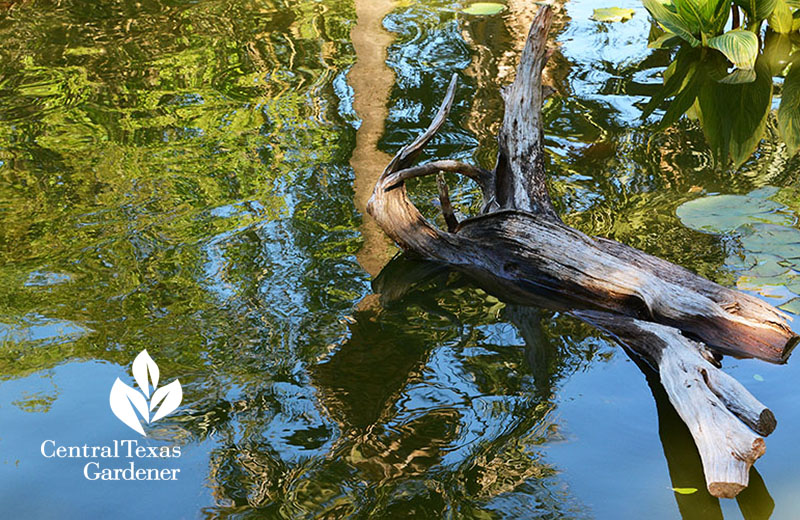
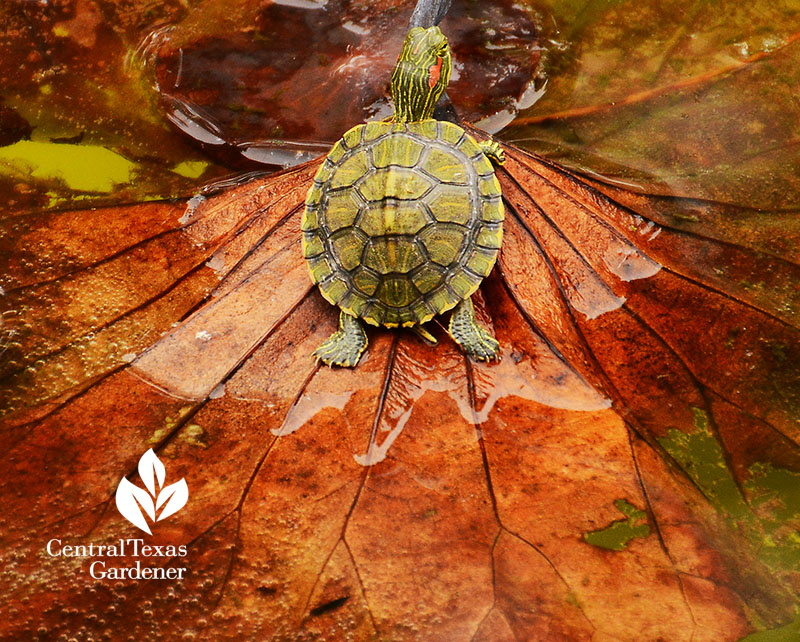
Beyond the stone fence, where the Mayfields and Gutsches once tramped, the Mayfield Preserve continues to harbor 21 acres of wildlife habitat in the city. A collaboration of Parks and Recreation, The Friends of Mayfield Preserve, and Austin Parks Foundation, a walking trail invites serene contemplation to the tune of birds.
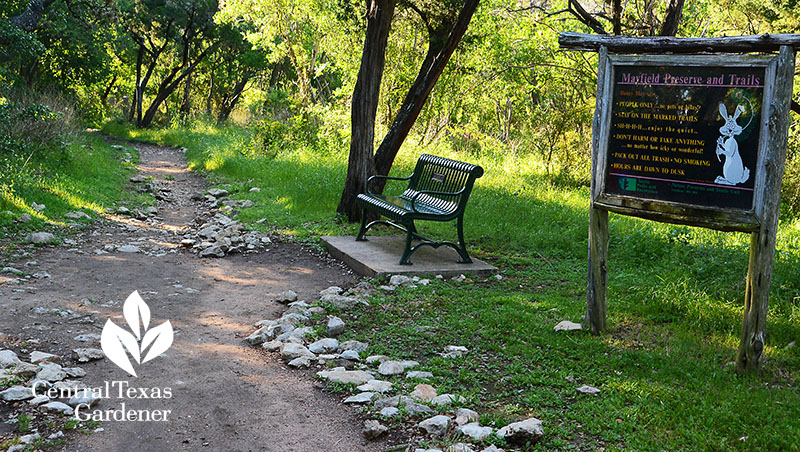
I’ve known Karen Cannatti since 1997 (at least) since she asked if I could help out with the annual spring Trowel & Error garden talks and heirloom plant sales. In sun, sudden cloud bursts, and even snow one year, I’ve got wonderful memories of remarkable speakers, enthusiastic crowds, and all the friends I met.
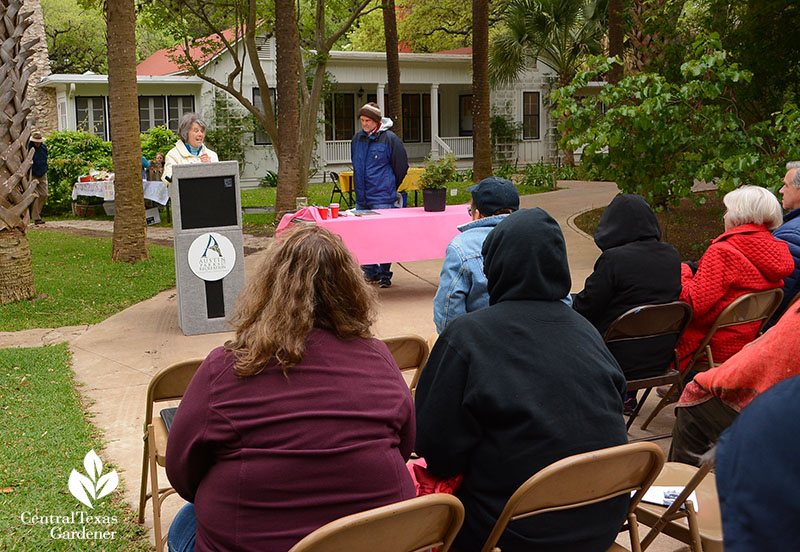
We can’t all give a park to our community, but I dearly admire and respect the hard-working visionary volunteers who carved time into their calendars to carry on Austin’s history and add another chapter.
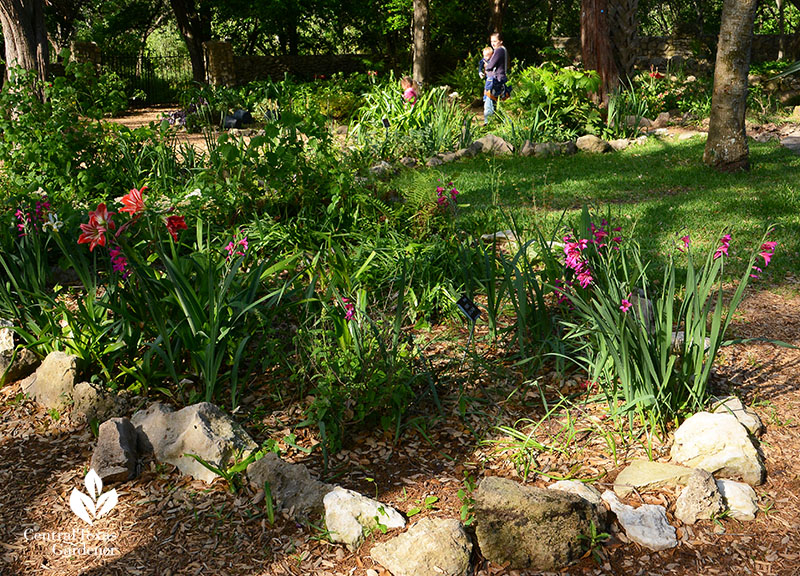
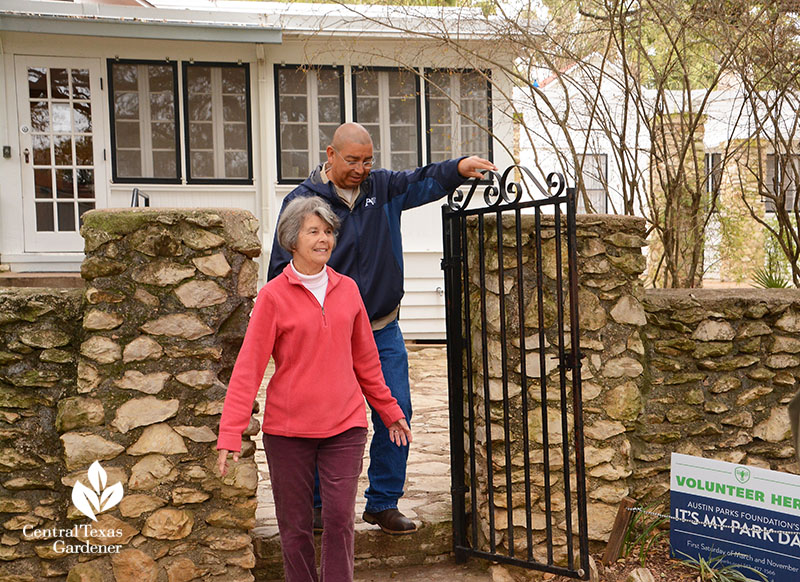
To adopt a garden or support Mayfield Park, click here.
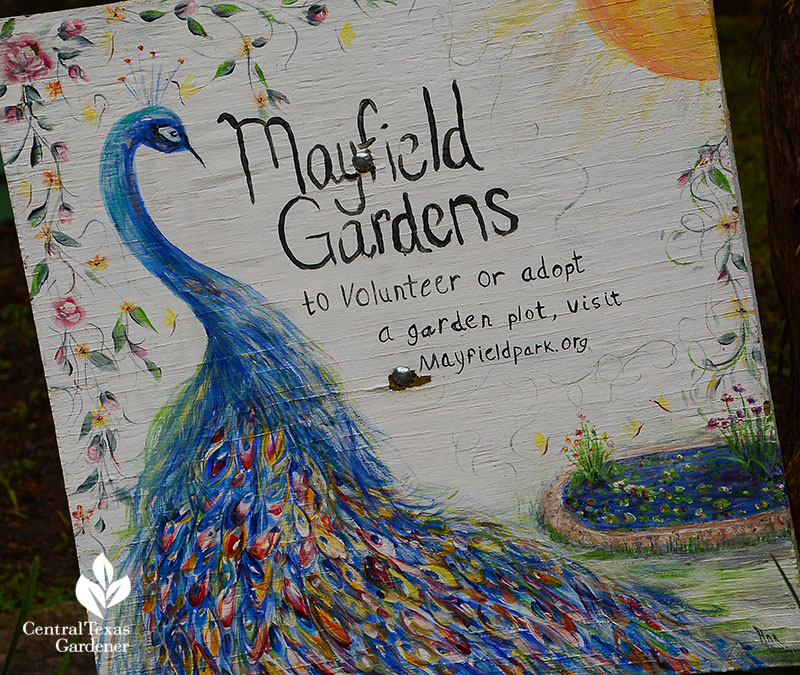
Watch now for the whole beautiful story!
And thanks for stopping by! See you next week, Linda

